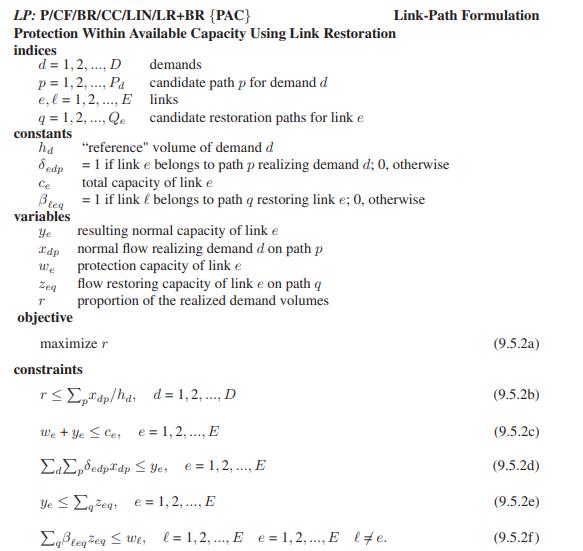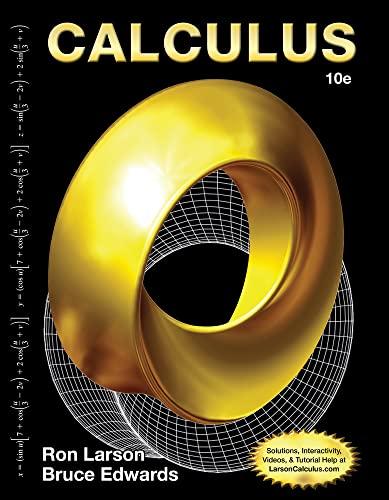Answered step by step
Verified Expert Solution
Question
1 Approved Answer
Consider a two-node network with two links and two demands between the two nodes. Suppose that c1 = 1, c2 = n and h1 =
Consider a two-node network with two links and two demands between the two nodes. Suppose that c1 = 1, c2 = n and h1 = 1, h2 = n, and that demand d = 1 uses only one path P11 = {1}, and demand d = 2 uses only one path P21 = {2}. What is the optimal solution of problem P/CF/BR/CC/LIN/LR+BR {PAC} (9.5.2)? What percentage of the normal capacity c1 + c2 = n + 1 is not used in the resulting 100% network? (Hint: the percentage of the unused capacity is 100(n − 1)/(n + 1)%, hence the percentage of unused capacity tends to 100% as n tends to infinity!)

LP: P/CF/BR/CC/LIN/LR+BR {PAC} Protection Within Available Capacity Using Link Restoration indices d = 1, 2, ..., D candidate path p for demand d demands p = 1, 2,..., Pa e,l 1,2, E links q= 1, 2, ..., Qe constants ha Ce candidate restoration paths for link e "reference" volume of demand d Link-Path Formulation = 1 if link e belongs to path p realizing demand d; 0, otherwise total capacity of link e Beeq = 1 if link belongs to path q restoring link e; 0, otherwise variables Ye Idp We Zeq T objective resulting normal capacity of link e normal flow realizing demand d on path p protection capacity of link e flow restoring capacity of link e on path q proportion of the realized demand volumes maximize r constraints rap/ha d= 1, 2, ..., D (9.5.2a) (9.5.2b) We+ye Ce, e=1,2,..., E (9.5.2c) Edpedpdp Ye, e = 1, 2, ..., E (9.5.2d) Yeeq = 1, 2, ..., E (9.5.2e) lege wel=1,2,..., Ee=1, 2,..., Ele. (9.5.2f)
Step by Step Solution
There are 3 Steps involved in it
Step: 1

Get Instant Access to Expert-Tailored Solutions
See step-by-step solutions with expert insights and AI powered tools for academic success
Step: 2

Step: 3

Ace Your Homework with AI
Get the answers you need in no time with our AI-driven, step-by-step assistance
Get Started


